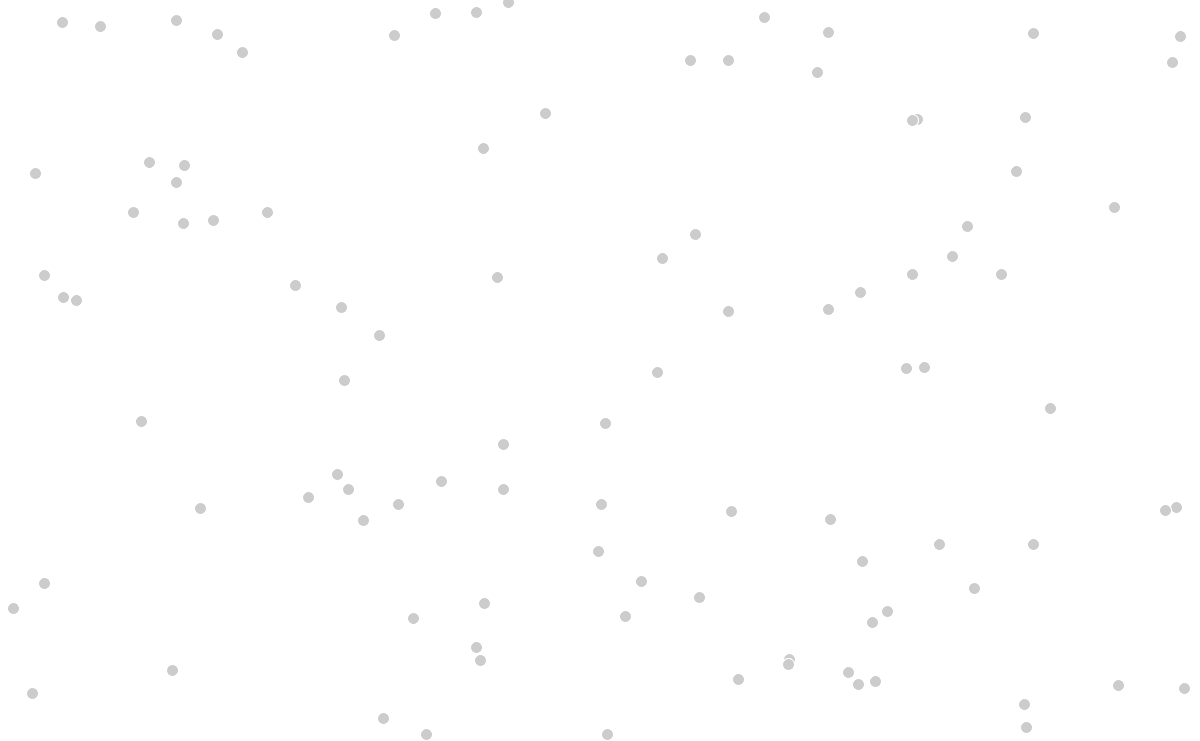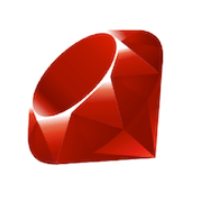🕸️
k-means 法を図で理解する

アルゴリズム
- 任意の数のクラスターを適当に配置する
- 各クラスターに近い点と結びつける
- グループの中心にクラスターを移動する
- 収束するまで 2〜3 を繰り返す
視覚的に理解する
最初の状態
最終的にクラスタリングがうまくいくように狙って配置しているわけではなく何の目論見もなくランダムに配置している。

任意の数のクラスターを適当に配置する
クラスターも同様にランダムに配置している。

各クラスターに近い点と結びつける

グループの中心にクラスターを移動する

再度、各クラスターに近い点と結びつける
ここがいちばん興味深いところでクラスターの中心が移動したことでより近いクラスターに切り替わった点がいくつか確認できる。

再度、グループの中心にクラスターを移動する

収束したら終える
近いクラスターと結びつけてクラスターをグループの中心に移動するを繰り返し、何も動かなくなったら終える。

途中経過を飛ばしてこの結果を見ると点がクラスターに寄って行っているように感じるが、クラスターが移動しているのであって、点はまったく移動していない。
コードの要点
各クラスターに近い点と結びつける
points.each do |point|
最も近いクラスター = clusters.min_by do |cluster|
point と cluster の距離を返す
end
point.cluster = 最も近いクラスター
end
距離は平方根まで求める必要はない。
クラスターを中心に移動する
cluster.each do |cluster|
if 所属する点が1つ以上あれば
cluster.位置ベクトル = 所属する点.sum(0ベクトル) / 所属する点の個数
end
end
クラスターの初期配置のバランスがいまいちだとクラスターに所属する点がなくなる場合もあるので0除算に注意する。
コード
require "active_support/core_ext/module/delegation"
require "#{__dir__}/../../物理/ベクトル/vec2"
class Cluster
attr_accessor :v
attr_accessor :color
attr_accessor :points
def initialize(v, color)
@v = v
@color = color
@points = []
end
end
class Point
attr_accessor :v
attr_accessor :cluster
def initialize(v)
@v = v
end
end
class App
attr_accessor :points
attr_accessor :clusters
delegate :write, :animation_write, to: :image_formatter
def call
@points = points_count.times.collect do
Point.new(vec_rand)
end
@clusters = []
snapshot :init1
@clusters = [
"blue",
"green",
"purple",
"orange",
"red",
].collect do |color|
Cluster.new(vec_rand, color)
end
snapshot :init2
@generation = 0
loop do
if @generation >= 50
break
end
@clusters.each { |e| e.points.clear }
@points.each do |point|
cluster = @clusters.min_by do |cluster|
point.v.distance_squared_to(cluster.v)
end
point.cluster = cluster.dup
cluster.points << point
end
snapshot
updated = false
@clusters.each do |e|
unless e.points.empty?
v = e.points.sum(V.zero, &:v) / e.points.size
if e.v != v
e.v = v
updated = true
end
end
end
unless updated
break
end
snapshot
@generation += 1
end
snapshot :done
puts @generation
animation_write("images/animation.gif")
end
def field_wh
V[field_w, field_w / 1.618033988749895]
end
private
def snapshot(name = nil)
name ||= "snapshot#{snapshot_couner}"
write("images/#{name}.png")
end
def snapshot_couner
@snapshot_couner ||= 0
@snapshot_couner += 1
end
def vec_rand
x = rand(field_wh.x)
y = rand(field_wh.y)
V[x, y]
end
def field_w
1200
end
def points_count
100
end
def image_formatter
@image_formatter ||= ImageFormatter.new(self)
end
end
class ImageFormatter
require "rmagick"
include Magick
attr_accessor :base
def initialize(base)
@base = base
@image_list = ImageList.new
end
def write(path)
render
@layer.write(path)
@image_list << @layer
open(path)
end
def animation_write(path)
av = @image_list.optimize_layers(Magick::OptimizeLayer)
av.delay = 50
av.write(path)
open(path)
end
private
def open(path)
system "open -a 'Google Chrome' #{path}"
end
def render
@layer = Image.new(*base.field_wh) do |e|
e.background_color = bg_color
end
base.points.each do |e|
if cluster = e.cluster
line_draw(e.v, cluster.v, cluster.color)
end
end
base.points.each do |e|
color = object_default_color
if cluster = e.cluster
color = cluster.color
end
point_draw(e.v, color)
end
base.clusters.each do |e|
cluster_draw(e.v, e.color)
end
end
def object_wh
V[12, 12]
end
def object_default_color
"gray80"
end
def bg_color
"white"
end
def line_draw(v0, v1, color)
g = Draw.new
g.fill(color)
g.line(*v0, *v1)
g.draw(@layer)
end
def point_draw(v, color)
g = Draw.new
g.fill(color)
g.stroke_width(1)
g.stroke(bg_color)
g.ellipse(*v, *(object_wh / 2), 0, 360)
g.draw(@layer)
end
def cluster_draw(v, color)
r = object_wh / 2 * 2
g = Draw.new
g.fill(color)
g.stroke_width(1)
g.stroke(bg_color)
g.rectangle(*(v - r), *(v + r))
g.draw(@layer)
end
end
if $0 == __FILE__
App.new.call
end



Discussion